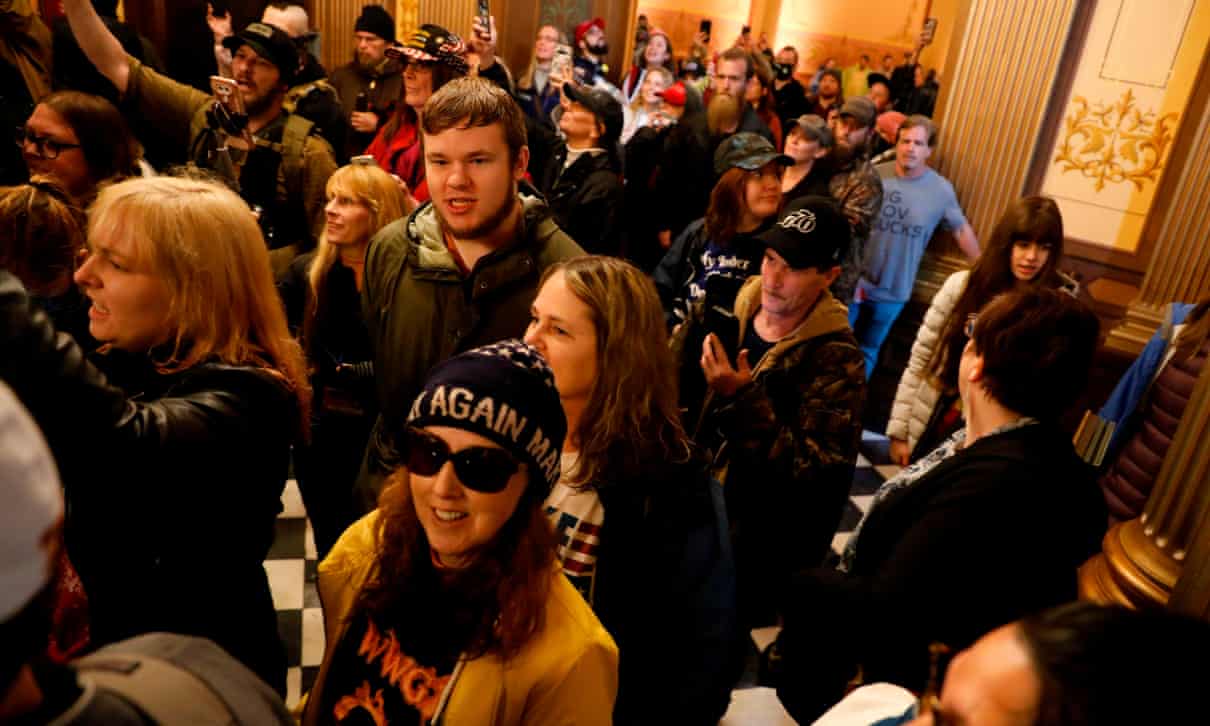
The Guardian
In 2004, a features editor asserted that "it is no secret we are a centre-left newspaper."
Cellphone location data suggests that demonstrators at anti-lockdown protests – some of which have been connected with Covid-19 cases – are often traveling hundreds of miles to events, returning to all parts of their states, and even crossing into neighboring ones.
The data, provided to the Guardian by the progressive campaign group the Committee to Protect Medicare, raises the prospect that the protests will play a role in spreading the coronavirus epidemic to areas which have, so far, experienced relatively few infections.
The anonymized location data was captured from opt-in cellphone apps, and data scientists at the firm VoteMap used it to determine the movements of devices present at protests in late April and early May in five states: Michigan, Wisconsin, Illinois, Colorado and Florida.
They then created visualizations that tracked the movements of those devices up to 48 hours after the conclusion of protests. The visualizations only show movements within states, due to the queries analysts made in creating them. But the data scientist Jeremy Fair, executive-vice president of VoteMap, says that many of the devices that are seen to reach state borders are seen to continue across them in the underlying raw data.
One visualization shows that in Lansing, Michigan, after a 30 April protest in which armed protesters stormed the capitol building and state police were forced to physically block access to Governor Gretchen Whitmer, devices which had been present at the protest site can be seen returning to all parts of the state, from Detroit to remote towns in the state’s north.
One device visible in the data traveled to and from Afton, which is over 180 miles from the capital. Others reached, and some crossed, the Indiana border.
In the 48 hours following a 19 April “Operation Gridlock” protest in Denver, devices reached the borders of neighboring states including Wyoming, Nebraska, Oklahoma, New Mexico and Utah.











